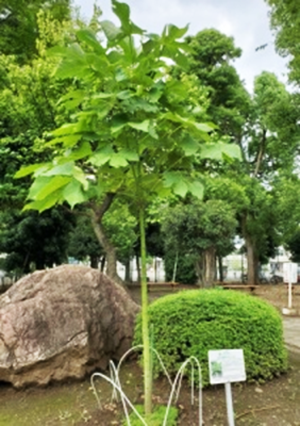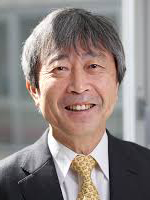1. Introduction
Hiroshima City established the Hiroshima Peace Culture Foundation in 1976 with the vision of realizing an International Peace Culture City. The foundation holds lectures and events during Peace Culture Month in November each year.Thus, the term "culture of peace" is familiar to Hiroshima citizens. However, when asked what a culture of peace is, it is not always easy to answer. Therefore, we would like to consider the meaning of the term "culture of peace" and its implications.
2. "Culture of Peace" in the Peace Declaration
Firstly, let us look at how the term is used in the 2022 Peace Declarations of the cities of Hiroshima and Nagasaki.
Hiroshima Mayor Kazumi Matsui stated that the Mayors for Peace "will intensify cooperation among peace-minded member cities and promote a 'culture of peace' that rejects all forms of violence". Nagasaki Mayor Tomihisa Taue said, “Let us make untiring efforts to ingrain in civil society a 'culture of peace' that spreads trust, respects others and seeks resolutions through dialogue."
Hiroshima Mayor Kazumi Matsui stated that the Mayors for Peace "will intensify cooperation among peace-minded member cities and promote a 'culture of peace' that rejects all forms of violence". Nagasaki Mayor Tomihisa Taue said, “Let us make untiring efforts to ingrain in civil society a 'culture of peace' that spreads trust, respects others and seeks resolutions through dialogue."
3. Violence and peace in peace research
Nextly, let us consider the "culture of peace" with reference to discussions in peace studies.
Johan Galtung, one of the leading scholars in peace studies, has juxtaposed peace with violence, presenting three types of violence: direct violence, structural violence, and cultural violence.
Briefly stated, direct violence is when someone directly harms another person, or when an army kills or injures an enemy soldier in war, for example. In contrast, structural violence exists when people, especially certain groups of people, die or suffer great damage, even though it is difficult to see who is committing the violence or the act of violence itself. For example, many people lose lives that would otherwise be spared because they lack access to adequate medical care due to poverty. We also say that if one million husbands beat one million wives, that is direct violence, but if one million husbands keep one million wives ignorant and uneducated, that is structural violence. Finally, cultural violence refers to the idea that direct violence and structural violence are acceptable and justified by society's morals, traditions, and customs.
Only when such violence is rejected and removed, and violence is absent, is there considered to be peace. A situation in which direct violence is absent is called direct peace, a world without structural violence is called structural peace, and a situation in which cultural violence is absent, and direct peace and structural peace are legitimized, is called cultural peace. Moreover, when there is a situation where cultural peace prevails in a society and this can be said to be a characteristic of that society's culture, such a culture can be called a "culture of peace". However, forcibly imposing a "culture of peace" is still violence.
Regarding specific events, direct violence is easier to understand, whereas for structural and cultural violence, there is not always consensus on what constitutes them.
Briefly stated, direct violence is when someone directly harms another person, or when an army kills or injures an enemy soldier in war, for example. In contrast, structural violence exists when people, especially certain groups of people, die or suffer great damage, even though it is difficult to see who is committing the violence or the act of violence itself. For example, many people lose lives that would otherwise be spared because they lack access to adequate medical care due to poverty. We also say that if one million husbands beat one million wives, that is direct violence, but if one million husbands keep one million wives ignorant and uneducated, that is structural violence. Finally, cultural violence refers to the idea that direct violence and structural violence are acceptable and justified by society's morals, traditions, and customs.
Only when such violence is rejected and removed, and violence is absent, is there considered to be peace. A situation in which direct violence is absent is called direct peace, a world without structural violence is called structural peace, and a situation in which cultural violence is absent, and direct peace and structural peace are legitimized, is called cultural peace. Moreover, when there is a situation where cultural peace prevails in a society and this can be said to be a characteristic of that society's culture, such a culture can be called a "culture of peace". However, forcibly imposing a "culture of peace" is still violence.
Regarding specific events, direct violence is easier to understand, whereas for structural and cultural violence, there is not always consensus on what constitutes them.
4. Efforts to create a "culture of peace" in the A-bombed cities
What efforts have been made in the A-bombed cities to promote a "culture of peace"?
The people affected by the atomic bombings have encountered many different types of violence. The atomic bombs were a complete destruction of human dignity. They also caused suffering from anxiety about the effects of radiation and related discrimination. Arguments to justify the atomic bombings on the grounds that they were dropped to end the war quickly have caused anger and grief.
 Nevertheless, in order to ensure that the deaths of those who died in the atomic bombings were not in vain and that nuclear weapons are not used repeatedly, those who were affected by the atomic bombings have conveyed their own experiences and memories of the bombings, appealed against the inhumanity of nuclear weapons, and called for their abolition.
They have also addressed the issue of Japan's responsibility for the war and have turned their attention to non-Japanese people affected by the atomic bombings.
In abstract terms, they have sought to eliminate not only direct violence but also structural and cultural violence.
I believe that each of these efforts will create and entrench a "culture of peace".
Nevertheless, in order to ensure that the deaths of those who died in the atomic bombings were not in vain and that nuclear weapons are not used repeatedly, those who were affected by the atomic bombings have conveyed their own experiences and memories of the bombings, appealed against the inhumanity of nuclear weapons, and called for their abolition.
They have also addressed the issue of Japan's responsibility for the war and have turned their attention to non-Japanese people affected by the atomic bombings.
In abstract terms, they have sought to eliminate not only direct violence but also structural and cultural violence.
I believe that each of these efforts will create and entrench a "culture of peace".
 However, it is also important to ask ourselves what discrepancies exist between the self-image of the people of the A-bombed cities and how they are perceived by people in other parts of the country and abroad, and why such gaps exist.
However, it is also important to ask ourselves what discrepancies exist between the self-image of the people of the A-bombed cities and how they are perceived by people in other parts of the country and abroad, and why such gaps exist.
The people affected by the atomic bombings have encountered many different types of violence. The atomic bombs were a complete destruction of human dignity. They also caused suffering from anxiety about the effects of radiation and related discrimination. Arguments to justify the atomic bombings on the grounds that they were dropped to end the war quickly have caused anger and grief.

Planting of a second-generation A-bombed Aogiri tree (Provided by the City of Kunitachi, Tokyo)

Planting of a second-generation A-bombed Aogiri tree (Provided by the City of Kunitachi, Tokyo)
5. Conclusion
There is still a war going on in Ukraine.
In addition, many people have been exposed to various forms of violence due to the Great East Japan Earthquake and the Fukushima nuclear power plant accident.
We can encourage these people by sharing the work we have been doing in the A-bombed cities, especially with those who were affected by the atomic bombings.
Solidarity across cities, countries, and issues will become increasingly important. Solidarity with people at home and abroad through Mayors for Peace, the United Nations, and other organizations, as well as striving for the abolition of nuclear weapons and the elimination of various forms of violence in other issues, will help to entrench a "culture of peace" without forcibly imposing it.
Solidarity across cities, countries, and issues will become increasingly important. Solidarity with people at home and abroad through Mayors for Peace, the United Nations, and other organizations, as well as striving for the abolition of nuclear weapons and the elimination of various forms of violence in other issues, will help to entrench a "culture of peace" without forcibly imposing it.
Ryo OSHIBA
Director and Specially Appointed Professor, Hiroshima Peace Institute, Hiroshima City University.
Specializes in International Politics.
After serving as Professor and Vice President of Hitotsubashi University and Professor at Aoyama Gakuin University, he assumed his current position in 2019. He is a former President of the Japan Association for International Politics.
After serving as Professor and Vice President of Hitotsubashi University and Professor at Aoyama Gakuin University, he assumed his current position in 2019. He is a former President of the Japan Association for International Politics.
Hiroshima Peace Culture Foundation
1-2 Nakajima-cho, Naka-ku, Hiroshima 730-0811 JAPAN
Phone 082-241-5246
Copyright © Since April 1, 2004, Hiroshima Peace Culture Foundation. All rights reserved.
